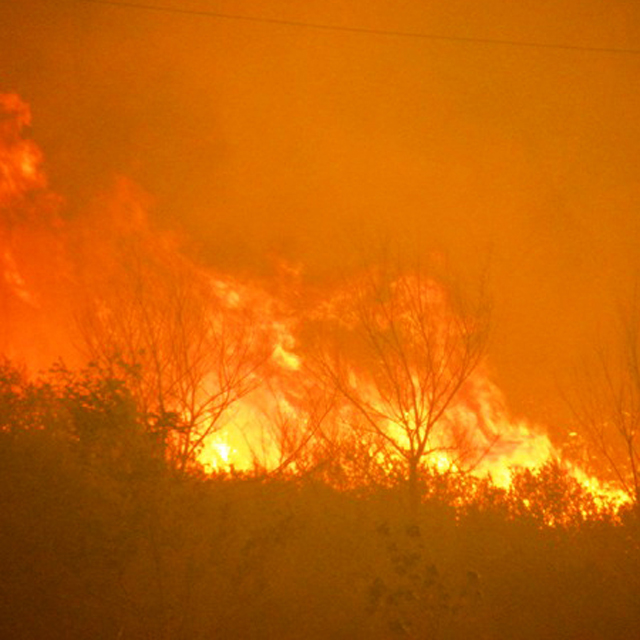
“Drought-free” is not a term you see in Colorado news headlines very often. But, after two long, dry years full of wildfires, parched rivers and thirsty reservoirs, Colorado finally got enough winter and spring moisture to officially declare the state drought-free, as of June 19.
This year, Colorado has the lowest amount of “dryness” the U.S. Drought Monitor has ever seen in its nearly 20-year history. Never before has there been so little color on the Monitor’s map of this state — as of June 18 every county in Colorado is plain, bland white: the color of hydro-security.
“[Plentiful runoff] often leads to positive water supplies potentially through the rest of the summer, but usually at least through spring,” says Brian Domonkos, supervisor of the Colorado Snow Survey at the U.S. Department of Agriculture. “It’s great for reservoirs because we usually wind up filling them when it’s this high.”
Years with this much runoff and precipitation make for bountiful summers, Domonkos says, which has cascading effects over all aspects of life in Colorado — from outdoor recreation to the state’s wildlife and economy. It may mean that mud season lasts a little longer than normal (particularly in the high country), and it could raise the risk of flooding and wildfires later in summer. But those are small prices to pay for the end of a 21-month state-wide drought.
And, according to Abby Leeper, the communications manager for the Colorado Office of Tourism, people seem excited to be getting outside regardless of the mud and leftover snow.
“I think we’re all really, really looking forward to a great season,” Leeper says. She thinks that rafters, kayakers, fishermen, paddleboarders and tubers are all looking at a booming wet year.
“People can really get out and enjoy the water this year in ways that they haven’t had the ability to in certain years prior,” she says.

That sentiment was echoed by Dave Costlow, the executive director of the Colorado River Outfitter’s association. By his estimation, this summer is looking like the perfect year for river rafting so far. And not just because of how much snow there is up high, but because of the speed at which it’s melting.
This spring has been consistently cooler than years prior, Costlow points out, which is causing the snowpack to melt at a slower pace. And slower is better, he says. At this rate, Colorado’s water season may extend straight through to the end of summer.
“Low water may not hit some rivers until the end of July, maybe not even until the end of August,” Costlow predicts. “There’s still enough snow up there that it will probably result in quite an extensive season.”
And one of the most dangerous, he adds. High rivers can be every bit as hazardous as they are fun to play on, which has already proven true.
As the rivers have risen and picked up speed they have also claimed lives — on June 25, search and rescue teams finally located the body of Roberta Sophia Rodriguez, who had been missing in the South Fork of the Rio Grande for 10 days. Her passing raises this season’s river death toll to six, after two separate incidents on June 21 claimed two lives on the Gunnison River.
But Costlow remains hopeful. He explains that most experienced outfitters will move their trips up or down stream, or even to different rivers to keep their clientele safe. With a year like this, there are a lot of options.
“So far, from a rafter’s perspective, it’s really nice, probably one of the best seasons in 25 years,” he says.
As for the risk of wildfire, the end of Colorado’s drought can go either way: If the state continues to get consistent moisture, the risk decreases. If, however, it stops raining and dries up, there could be problems.

“In the event that we dry out really quick this summer and we have all this underbrush that has grown up as a result of the high snowpack, it can also make for a bad fire season if things turn around and dry up really quick,” Domonkos says.
Last year was one of Colorado’s worst wildfire seasons on record: 11 wildfires tore across the state, torching over 350,000 acres of land and destroying hundreds of homes and structures. Five of the largest wildfires in Colorado history were recorded last year, with the extreme drought conditions to blame.
To that end, more moisture is better (as long as it’s consistent). But it can also increase the risk of flooding, warns Domonkos. With the rivers already running high, it doesn’t take a biblical rainstorm to send them spilling over their banks — it could happen with a relatively average one.
There are both pros and cons to having this much snowpack in the high country. Generally speaking, though, big summer water is good for Colorado all around: good for the environment, the economy and the Colorado way of life.














